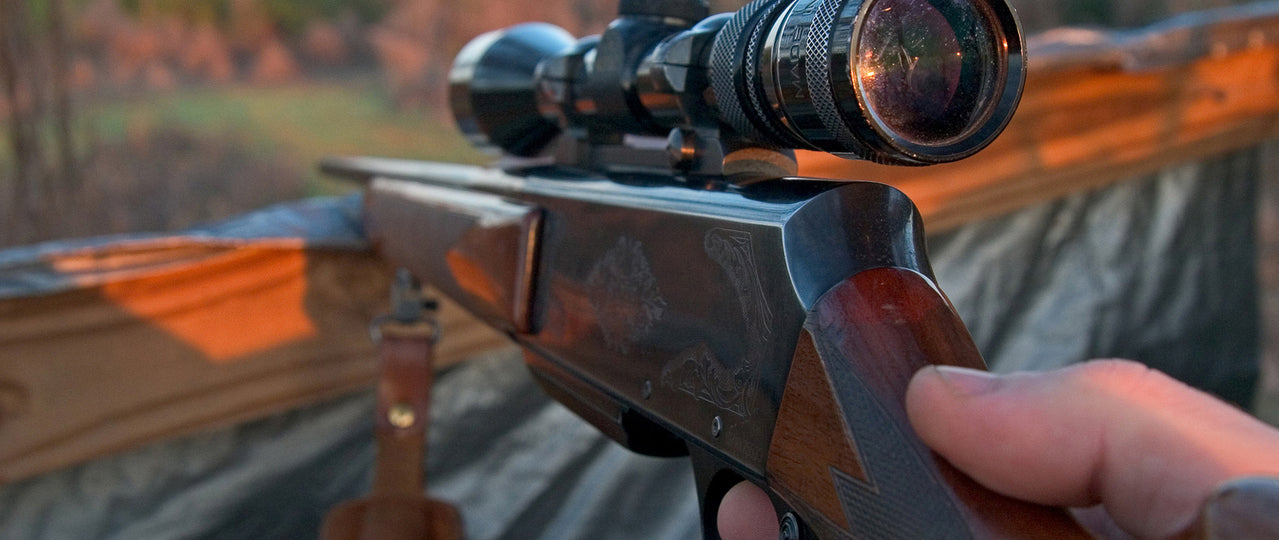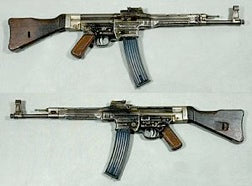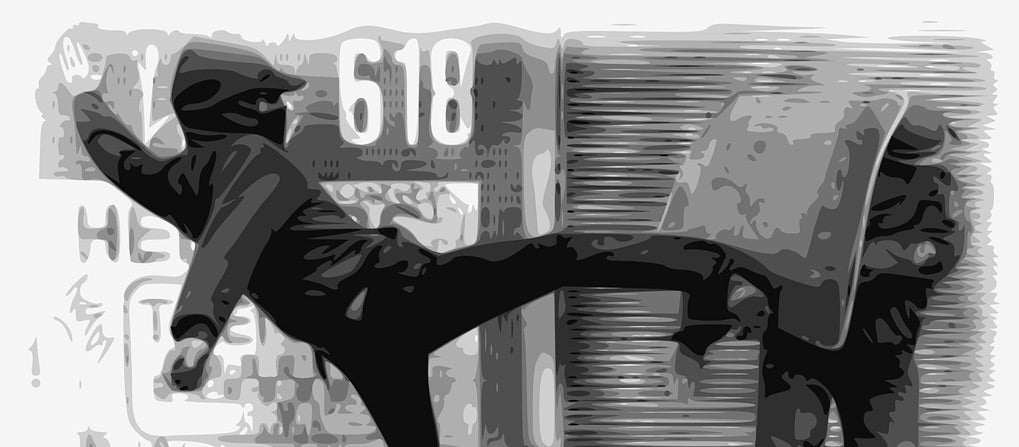
The History of the Rifle

The history of the rifle is a long one, but the term rifle was originally applied to the grooving inside a barrel with the first examples being referred to as “rifled guns” or “rifled muzzleloaders”. As defined by the Merriam-Webster dictionary: “Rifle: a gun that has a long barrel and is held against the shoulder when you shoot it, or to cut spiral grooves into the bore of.” It is also possibly from the French term, rifler, which is to scratch or file.
Rifling in itself is not specific to shoulder fired guns, as cannons had been rifled as early as 1664, and examples used in 1776 by the British. There are common features which separate cannons from rifles; a stock, barrel and trigger/ignition mechanism. There are variations on these three features as technology progressed and, for many years, early rifles shared characteristics of their non-rifled contemporaries such as muskets and shotguns. It’s hard to talk about rifles without also talking about ammunition. In the history of the rifle technological evolution and innovation have affected each other. I will cover a few specific examples of both firearms and ammunition that shaped what became a modern rifle.
History of the Rifle Stock
The first step in the history of the rifle was the stock. A stock is the part of the gun placed against the shoulder to facilitate aiming and recoil management. This can be made of wood, plastic or metal depending on the manufacturer and time period. It is often a permanent part of the assembly that holds the mechanical working parts of the rifle. Folding, collapsible or attachable versions have also been developed. A stock is not exclusive to a rifle, as machine guns, shotguns, submachine guns and even pistols have had them through the years. The term stock dated to 1571 is derived from the Germanic word stoc, meaning tree trunk, referring to the wooden nature of the gunstock.
a permanent part of the assembly that holds the mechanical working parts of the rifle. Folding, collapsible or attachable versions have also been developed. A stock is not exclusive to a rifle, as machine guns, shotguns, submachine guns and even pistols have had them through the years. The term stock dated to 1571 is derived from the Germanic word stoc, meaning tree trunk, referring to the wooden nature of the gunstock.
 The first hand cannons simply had a wooden pole attached to the breech end to provide a handle. They could not be aimed and fired by one man effectively. The Arbuequest, a matchlock with a long barrel, was the first appearance of a stock that could be braced against the shoulder and held with two hands. This was due to the innovation of the slow burning match, which allowed one man to light the fuse, brace the gun and sight down its barrel.
The first hand cannons simply had a wooden pole attached to the breech end to provide a handle. They could not be aimed and fired by one man effectively. The Arbuequest, a matchlock with a long barrel, was the first appearance of a stock that could be braced against the shoulder and held with two hands. This was due to the innovation of the slow burning match, which allowed one man to light the fuse, brace the gun and sight down its barrel.
History of the Rifle Barrel
The most distinct feature that makes a rifle is the way its barrel works. Helical grooves are formed in the barrel, which impart a spin to a projectile along its axis. Machining or forging created these grooves. The spin creates gyroscopic stability, which improves the aerodynamic properties and therefore accuracy. Invented in Germany in the 15th century, rifling was first polygonal and shaped in a spiral pattern. This created hills and valleys and created a spin on the projectile. This was replaced for a time by conventional rifling where deep groves are cut into the barrel, which also created spin and increased accuracy. The soft metal of the projectile would deform into the rifling and start the spin, and in some cases fins or ribs where added to the ball to fit into the rifles grooves. Polygonal rifling has come back into common use today in many handguns by CZ, H&K and Glock, with claims that it provides longer service life and has higher velocities.

Smooth bore muskets do not have rifling. The spherical projectile was smaller in diameter than the barrel, and the projectile would bounce against the sides creating instability. One of the first adaptations of the musket was the Kentucky rifle, in the early 1700s. German immigrants created long barreled rifled muzzleloaders. The smaller diameter barrel and tight fitting lead ball made it more accurate, but it was slower to load. It was the slower reload time of the rifled guns that made them less desirable as a military firearm at the time.
Ammunition
In the history of the rifle it was the introduction of the “Minie” Ball in 1840 that allowed rifled muskets to replaced smoothbore muskets as the primary military firearm. The Minie was a conical projectile that would expand and deform. This would create friction and engage the rifling. For the most part the longer the barrel the more spin and more accuracy one would have. However, barrel length had little to do with the definition of a rifle. Until the 19th century there was little standardization of barrel length. The Brown Bess musket the British army carried had a barrel length of 42 inches, while cavalry units would have short-barreled guns ranging from 24 to 32 inches. In the 20th century, a barrel length of about 20 inches sets the difference between rifles and carbines. A carbine is simply a smaller length rifle.
Powder Fired Rifles
The way the powder was ignited has changed the efficiency and ammunition capacity of rifles.
First, fulminate of mercury, then potassium chlorate and now lead styphnate is used for propellant. The ignition of the powder, or deflagration, creates expanding gas pushing the bullet out of the barrel. The first simple hand cannons simply had a hole in the barrel to insert a fuse and ignite the powder. This was followed by matchlocks, which used a slow burning match and a small pan holding powder. Flint and wheel lock guns followed in the 15 and 1600’s, which were of similar design and function. These early firearms had to be cocked and caught by the sear, which holds the hammer back, before each shot. In 1610 Marin le Bourgeois developed the flintlock rifle. The trigger releases a spring-loaded mechanism that causes a flint to strike a steel surface; the ensuing spark ignites gunpowder and propels a spherical bullet.
In 1825 Reverend John Forsyth invented the percussion cap. The significance of this is the percussion cap made rifles reliable in inclement weather by enclosing the ignition system.
In 1836, Johann Nikolaus von Dreyse created a needle gun that would become a staple of the Prussian army. Dreyse’s breech-loading rifle relied on cartridges that included a black-powder charge, a percussion cap and a bullet wrapped in paper. While not a muzzleloader, Dreyse’s design of the entire firing mechanism in a straight line is thought to have led to the development of the inline muzzleloader and the bolt-action rifle. It also leads to the development of cartridge ammunition.
The first pin fire cartridge was created in 1840 and was followed by both rim fire cartridges (1859) and center fire (1869). The advent of cartridges fundamentally changed the way rifles we loaded and paved the road for multiple capacity, repeating firearms. Pulling the trigger allows the hammer or striker to fly forward, striking the firing pin, which then strikes the primer, igniting an impact-sensitive chemical compound which shoots a flame through the “flash hole” into the cartridge’s propellant chamber, igniting the propellant.
Magazine Fed Rifles
In 1860 the Spencer repeating rifle was the first adoption of a removable magazine fed infantry rifle. The Spencer used rim fire metallic cartridges in a tubular magazine.
 In 1884 Paul Vieille invented a smokeless powder that gave off almost no smoke and was three times more powerful than black powder. Cartridges became smaller and lighter, and led to the development of magazine fed rifles such as the Lebel Model 1886.
In 1884 Paul Vieille invented a smokeless powder that gave off almost no smoke and was three times more powerful than black powder. Cartridges became smaller and lighter, and led to the development of magazine fed rifles such as the Lebel Model 1886.
The Lee-Metford was a bolt action .303 Caliber bolt action, box magazine rifle created in 1884. This was the predecessor of the famous WWI and WWII rifles such as the Lee- Enfield and Mauser. Many of the rifles of this period used a striper clip to load the magazine.
Ferdinand Ritter von Mannlicher unveils the model 85 semi automatic rifle in 1885.  Introducing the recoil operated action. It is accepted that the model 85 inspired the M1 Garand, and his 1900 short stroke piston inspired the M1 Carbine.
Introducing the recoil operated action. It is accepted that the model 85 inspired the M1 Garand, and his 1900 short stroke piston inspired the M1 Carbine.
A fundamental change in the employment and role of rifles quickly developed during and after WWII. Many countries developed intermediate cartridges, bridging the gap between pistol and heavy rifle rounds. It was believed that the standard .30-06 round was too powerful for average engagement distances. The US Army for instance, had staunch opposition to issuing the semi automatic M1 as they believed its higher rate of fire would lead to wasted ammunition.

During Operation Barbossa, the German invasion of Russia in 1941, the Russians had already equipped many units with STV-38, STV-40 and PPSh-41 submachine guns. The high volume of fire over that of the German units caused the Germans to reconsider their doctrine and increase production of semi automatic and select fire guns. Select fire guns using a rifle cartridge are seen as far back as 1890 with the gas operated Cei-Rigotti, and the short recoil Fedorov Avtomat in 1915. In the history of the rifle the first accepted “assault rifle” was the German Sturmgewhr 44. Sometimes known as the MP 43/44, this rifle set the stage for today’s modern systems such as the AR-15 and the AK-47. Two of the most prolific and controversial weapon systems ever created.
Even today new designs like the British SA-80 and Steyr AUG which use a “bullpup” design make us rethink of what we consider a rifle. Into the 21st century, innovations will again change how we define rifles, such as caseless amunition, smart optics and better metallurgy. The U.S. Army’s experimental XM 25 crosses the line between a grenade launcher and a rifle. The questions of what the next steps will be and how will we classify what a rifle is, are to be determined.
~ Aegis Academy Staff
Leave a comment
Comments will be approved before showing up.
Also in Staff Articles

Home Defense - What you can do...

Gun Review: Sig Sauer P938


Patrick Henry
Author